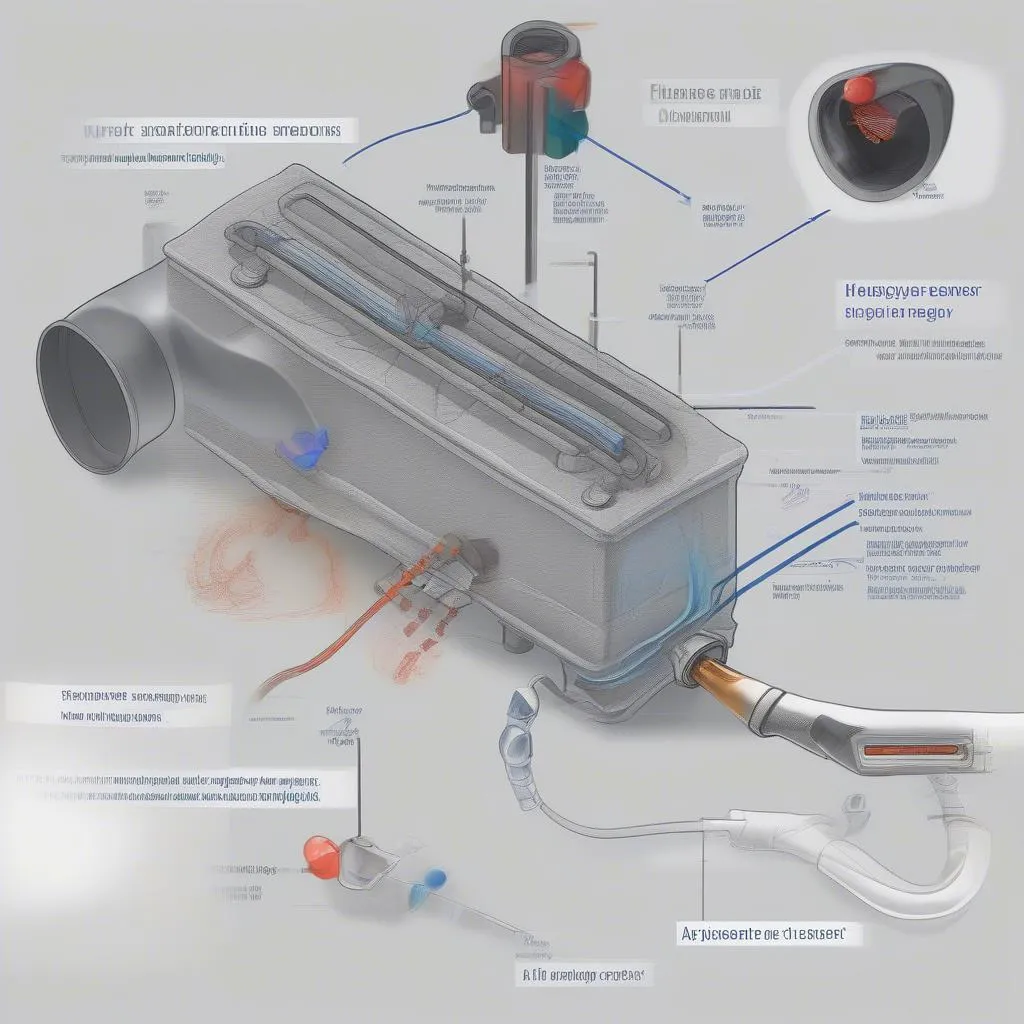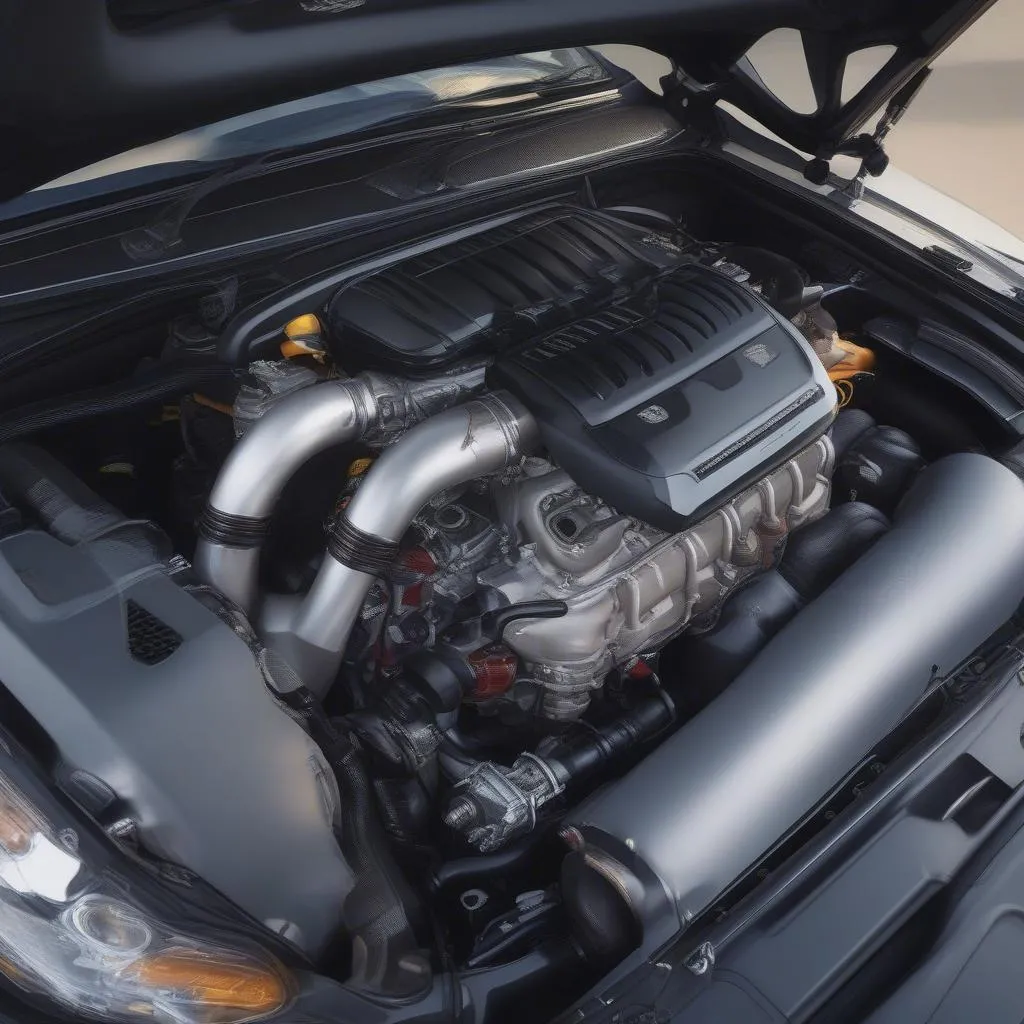“A smooth sea never made a skilled sailor,” goes the old saying. The same can be said for our cars. Just like a sailor relies on the wind to guide their ship, our engines rely on a delicate balance of air and fuel for optimal performance. But what happens when that harmony is disrupted? Enter the cryptic “Obd Code P2196”.
Deciphering the Code: What is Obd Code P2196?
In essence, the OBD code P2196 signals an imbalance in your engine’s air-fuel ratio, specifically indicating that the oxygen sensor detects a too rich condition at the bank 1, sensor 1. This means there’s an excess of fuel compared to air entering the engine’s combustion chamber. Now, you might wonder, “Bank 1, sensor 1? What in the automotive world does that even mean?” Don’t worry, we’ll break it down!
- Bank 1: Refers to the side of the engine containing cylinder #1.
- Sensor 1: Indicates the oxygen sensor located before the catalytic converter, responsible for monitoring the air-fuel ratio entering the engine.
Imagine your engine as a set of lungs. Just like our lungs need the right balance of oxygen to function, so does your engine. When this balance is off, your engine might start “coughing” or showing signs of distress, much like we do when we have trouble breathing.
Why Should You Care About P2196?
You might be tempted to ignore this engine light, thinking it’s a minor hiccup. However, renowned automotive expert, Dr. James O’Connell, author of “The Inner Workings of Modern Engines,” warns, “Ignoring an OBD code like P2196 is akin to ignoring a fever. It’s a clear indication that something is amiss and needs attention.”
Here’s why addressing P2196 is crucial:
- Reduced Fuel Economy: A rich air-fuel mixture means your engine is burning more fuel than necessary, hitting your wallet hard at the pump.
- Catalytic Converter Damage: Excess fuel can damage this expensive component, leading to costly repairs.
- Engine Performance Issues: Expect rough idling, decreased acceleration, and potentially even stalling.
- Failed Emissions Tests: A rich air-fuel ratio increases harmful emissions, making your vehicle fail environmental regulations.
Common Causes of Obd Code P2196
So, what throws this delicate balance off? Several culprits could be lurking under the hood:
- Faulty Oxygen Sensor: The primary suspect! A malfunctioning oxygen sensor might be sending inaccurate readings to the engine control module (ECM).
- Fuel Injector Problems: Leaky or clogged fuel injectors can disrupt the fuel flow, leading to a rich mixture.
- Vacuum Leaks: Just like a leak in a straw can make it hard to sip your drink, vacuum leaks can upset the engine’s air intake, leading to a fuel-rich scenario.
- Faulty Fuel Pressure Regulator: This component ensures consistent fuel pressure. If it malfunctions, it can lead to an oversupply of fuel.
- EVAP System Issues: Problems with the evaporative emission control system can introduce fuel vapors into the intake manifold, affecting the air-fuel ratio.
Troubleshooting P2196: Where Do You Start?
While diagnosing and fixing the root cause of P2196 often requires professional expertise, some preliminary steps can help:
- Read and Clear the Code: Use an OBD-II scanner to read the code and clear it. Sometimes, a temporary glitch triggers the code, and clearing it might solve the issue. However, if the code returns, further investigation is needed.
- Visually Inspect for Obvious Issues: Check for loose or disconnected vacuum hoses, damaged wiring near the oxygen sensor, or signs of fuel leaks.
- Consult a Mechanic: If the problem persists, it’s best to seek professional help.
** oxygen sensor**
oxygen sensor**
P2196: More Than Just a Technical Glitch?
Interestingly, some car enthusiasts believe that encountering certain OBD codes might hold a deeper meaning. While not scientifically proven, there are anecdotal accounts of people associating specific car troubles with life events, using these instances as opportunities for introspection. For example, a sudden engine issue related to fuel-air imbalance could be seen as a sign to find balance in other areas of life, like work-life balance or emotional well-being.
** engine bay**
engine bay**